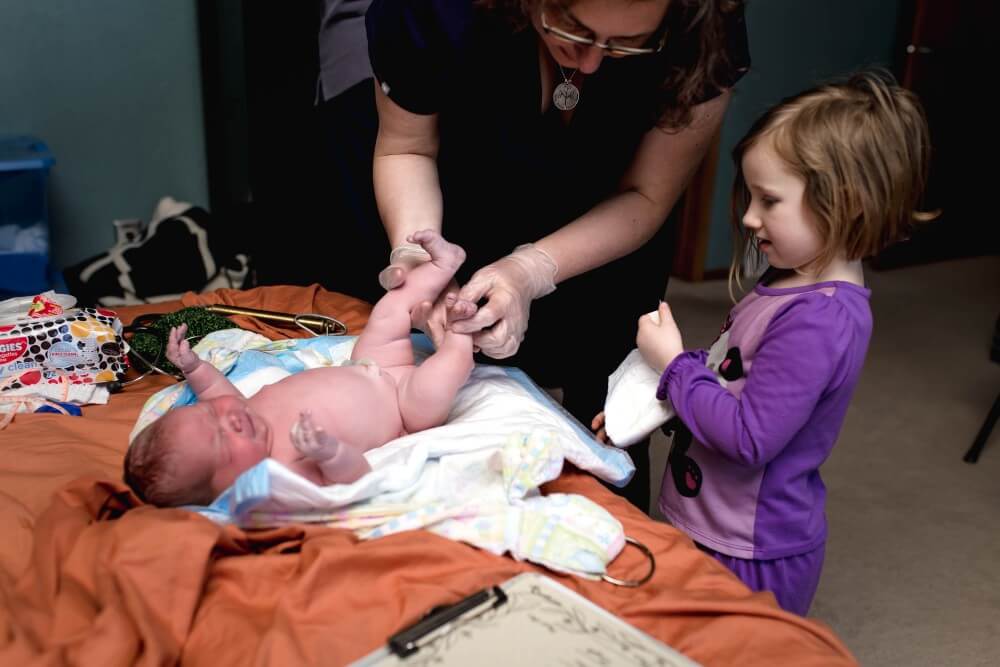Certified Professional Midwife, licensed in Wisconsin, Anja Farin has been serving families in Northeast Wisconsin since 1997. Anja shares with us what the top three worries newly pregnant families have when considering a home birth – complications, pain management and clean up.
1. Complications
Considering and preparing for the potential complications that can occur during birth can help in allowing us to relax and release the worry around the unknown aspects of birth. Midwifery care focuses on prevention, management, and transfer.
Prevention. From the first moments of care, your midwife spends time thinking about your particular risk factors and whether you’re a good candidate for home birth. Being mindful about self-care including eating well, exercising, relaxing, and resting can help to ensure a healthy pregnancy and birth. Learning all you can about natural childbirth and the birth process are useful in easing anxiety about the birth of your child. The midwifery model of care generally avoids unnecessary intervention which is another way that risks can be reduced in birth.
Management. Home birth providers are trained in dealing with the typical complications that could happen during birth, including handling of hemorrhage, resolution of shoulder dystocia (baby being stuck after the birth of the head), stitching up perineal tears, and performing newborn resuscitation. Typically, midwives carry many supplies to assist in the management of these and other possible outcomes, such as medications to stop bleeding, IV supplies, resuscitation equipment, and suturing supplies. Check with your midwife about her personal equipment, skills, and supplies.
Transfer. Ultimately, everyone’s goal is a healthy outcome for mom and baby. It sometimes becomes necessary, despite prevention and management, for a mother and baby to transfer to a higher level of care during pregnancy, labor, or after birth. Most times, transfers are not made under emergency conditions.
2. Pain Management
It is not uncommon for birth to be regarded as the worst pain that a body can experience. However, this is not necessarily true and the pain our body experiences can help to guide the ways that we manage the pain. Planning for a birth without pain medication is reasonable, and best achieved with some advance preparation. Staying active, healthy, hydrated, and willing to accept the process are all great steps to take. Thinking about the ways that you’ve managed pain and sickness in other situations can be helpful for evaluating how the pain of birth will be managed. Learning all you can about home birth, natural birth, and the normal progress of labor can help to ease your mind as well as giving you tools to use during your labor. Having a support system in place that includes your care provider, your partner, and any other support people, including potentially a doula, can all help you to embrace the untamed delight that can be a home birth.
3. Clean Up
This is the most simple concern to address. Your birth team cleans everything up and they’re really good at it. You’ll end up with a bag of trash and a load of laundry that needs to be put into the dryer.
Giving birth, whether at home or in a hospital, is an important decision and should be made with careful and honest communication with your support team and care provider.
Home birth is not for everyone but can be a beautiful option for many birthing people.
Anja Farin, Home Birth Midwife
Anja Farin offers full spectrum midwifery care with complete prenatal, birth and postpartum care for people planning a home birth. She offers Arvigo® supported pregnancy and postpartum, lactation consulting, herbal and nutritional support from Oshkosh to Milwaukee. For more information visit: anjafarin.com















